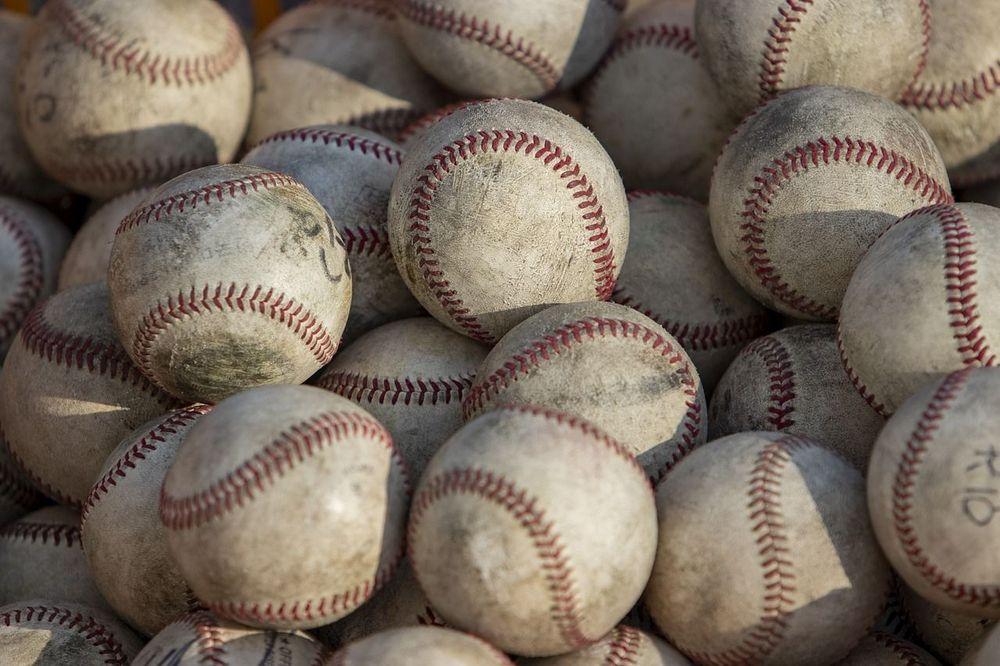
The Top 10 relievers by trade value
According to our model, the Top 10 relievers by trade value are:
- [baseball-trade-values-player-link player="8377"]
- [baseball-trade-values-player-link player="8688"]
- [baseball-trade-values-player-link player="9297"]
- [baseball-trade-values-player-link player="8549"]
- [baseball-trade-values-player-link player="8753"]
- [baseball-trade-values-player-link player="9036"]
- [baseball-trade-values-player-link player="7776"]
- [baseball-trade-values-player-link player="8014"]
- [baseball-trade-values-player-link player="9085"]
- [baseball-trade-values-player-link player="7842"]
Honorable mentions: [baseball-trade-values-player-link player="7566"],[baseball-trade-values-player-link player="8330"],[baseball-trade-values-player-link player="8239"],[baseball-trade-values-player-link player="8207"],[baseball-trade-values-player-link player="8051"]
As you can see, we estimate that the most valuable relief pitcher in baseball today is Josh Hader. He’s obviously elite, comes with four years of affordable control (despite Super Two status), and is still young enough to suggest he’ll maintain his peak form for a while. Then again, as we all know, relievers are volatile, and carry significant performance risk (just ask the Rockies about that).
Relief pitchers are also a curious bunch valuation-wise. When we developed our model, we quickly realized that using a composite of WAR projections to determine their field value was not going to cut it -- for two reasons.
First, WAR is a blunt object. You need a lot of playing time for it to make sense. Given the smaller sample sizes of relief pitchers (they pitch roughly 40% as many innings as an average starter), using WAR alone comes with too much variance and noise.
Second, WAR is a generalist stat. It’s not surgical enough for this case. It doesn’t take into account leverage, which is a very important factor with relievers. Their job is to get outs, like any other pitcher, but those outs often come in more meaningful situations.
To account for this, we incorporated WPA into our model, and found a much higher correlation to real-life trades. Granted, WPA is not perfect either: it’s not predictive, it can vary quite a bit, and it includes context that is outside of the pitcher’s control. And yet despite that, combining it somewhat into our formula made sense both mathematically and logically. Those late-inning outs matter to the outcome of a game, and the better a reliever is at getting those outs, the more valuable he tends to be.
One other factor that correlates well is xwOBA -- the best relievers tend to have dramatically low xwOBA numbers (note that they often lead the list on Statcast, often besting even top-quality starters), presumably because they only throw their best one or two pitches and can dial them up (as opposed to starters, who have to mix in three or four pitches and need to pace themselves more over longer outings).
So if you wanted to look up the WAR projections, the WPA stats and the xwOBA numbers of the pitchers on this list, you’ll find they all tend to score well on those fronts.
Of course, the usual other rules apply as well: since trade value is largely based on surplus value, the guys on this list tend to have lower salaries over longer periods of team control -- which is why you don’t see, say, [baseball-trade-values-player-link player="8264"]here.
Other points we’ve observed about relievers:
Shorter years of control: Most teams don’t sign relievers to long-term contracts, as their windows tend to be shorter, and they’re less predictable. If they lose their stuff, they quickly fall off the map. Those with longer timeframes here are the younger ones who haven’t yet hit free agency (or even their arbitration years).
Age is less of an issue: Unlike starters and position players, you see a lot of relievers pitching effectively well into their 30s. Heck, sometimes they don’t even figure things out until their late 20s (hello, Nick Anderson!). Presumably that’s because most of them are failed starters, so they switched paths late. And once they did settle into their roles, they put less wear and tear on their arms.
The role is evolving: Progressive teams like the Rays and Brewers are blurring the traditional lines between starters and relievers, which makes this task more challenging. We included Freddy Peralta and Josh James on this list despite the fact that their roles are unclear (although most scouts pegged Peralta as a reliever based on his stuff and profile, and James has been used as such more recently). It’s also true that their WAR projections are slightly higher because they carry some possibility of starting.
Oh, and what’s Edwin Diaz doing on this list, you ask? Yes, he’s obviously coming off a down year. But that doesn’t mean he won’t bounce back to his previous elite form, and his peripherals suggest he ran into a lot of bad luck in 2019. Given his age and track record, we think there’s a case for that. There’s at least a significant probability of it, which is what his valuation reflects.
And finally, a note about risk: One thing every serious baseball fan knows is that relievers are volatile. [baseball-trade-values-player-link player="9599"]was all-world in 2018, but a complete bust in 2019. [baseball-trade-values-player-link player="8428"]was DFA’d in 2018, then somehow turned into an elite closer in 2019. It wouldn’t surprise anyone if those two flip-flopped again in 2020 (if there is a 2020).
This past offseason, there were rumors that the Brewers were shopping Hader -- and any team considering trading for him had to factor in the probability that he would decline, get injured, or bust out completely. Those unknowns are always factored into any valuation in probability terms. Nonetheless, he would be a serious upgrade for any bullpen.
Just remember that with relievers, it’s always buyer beware.

